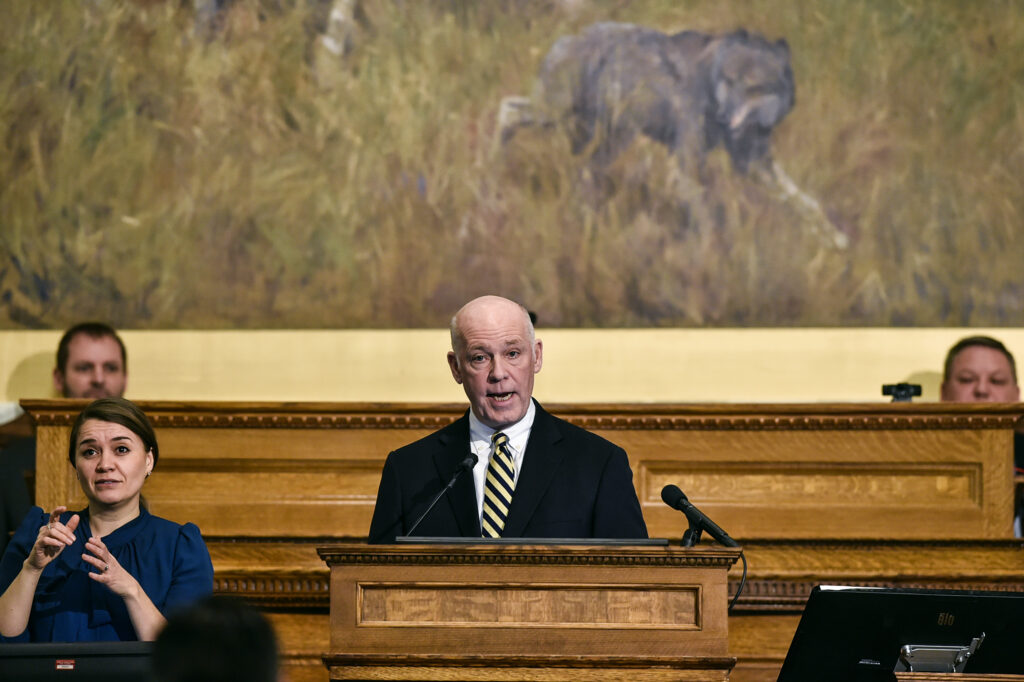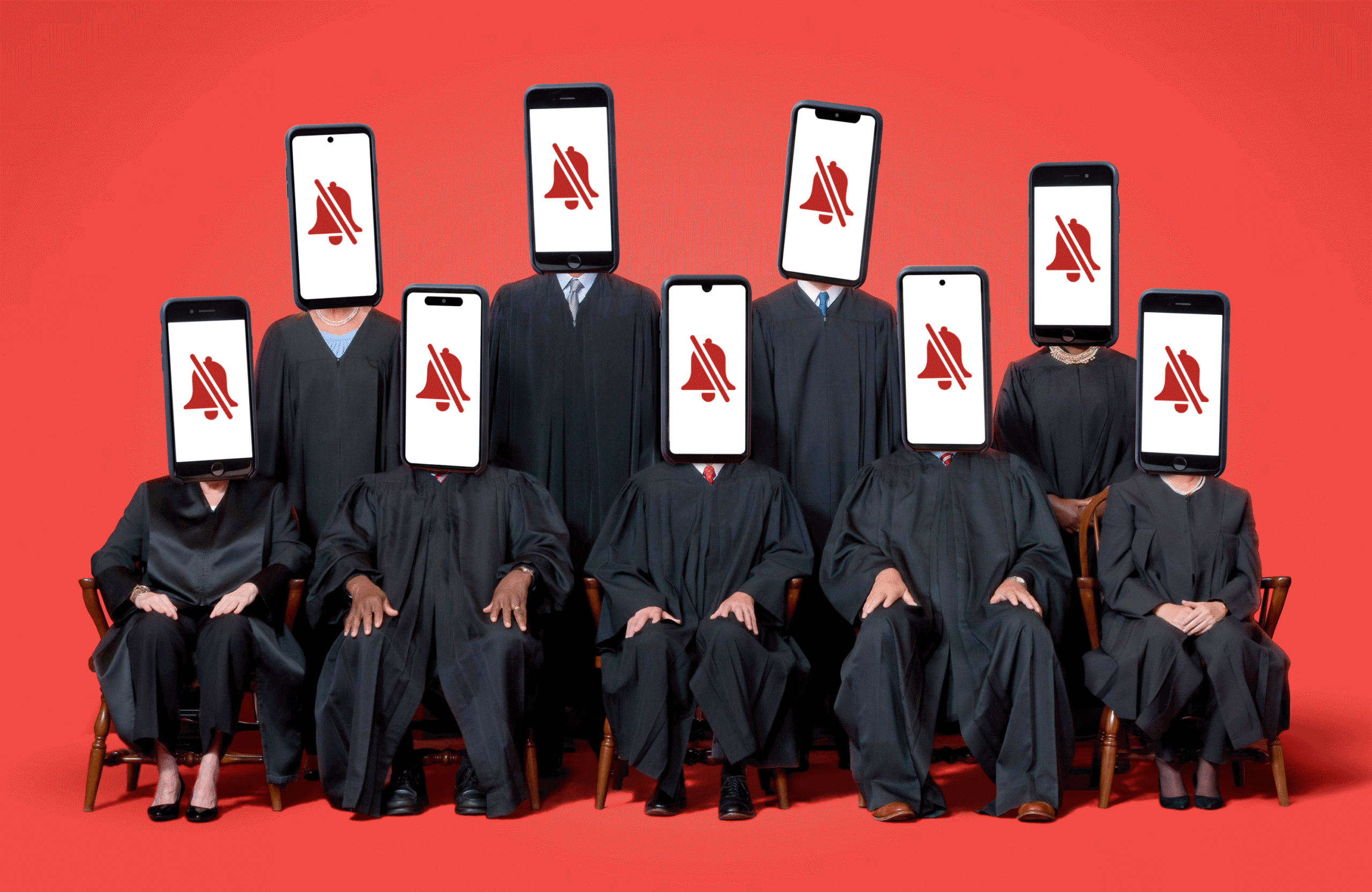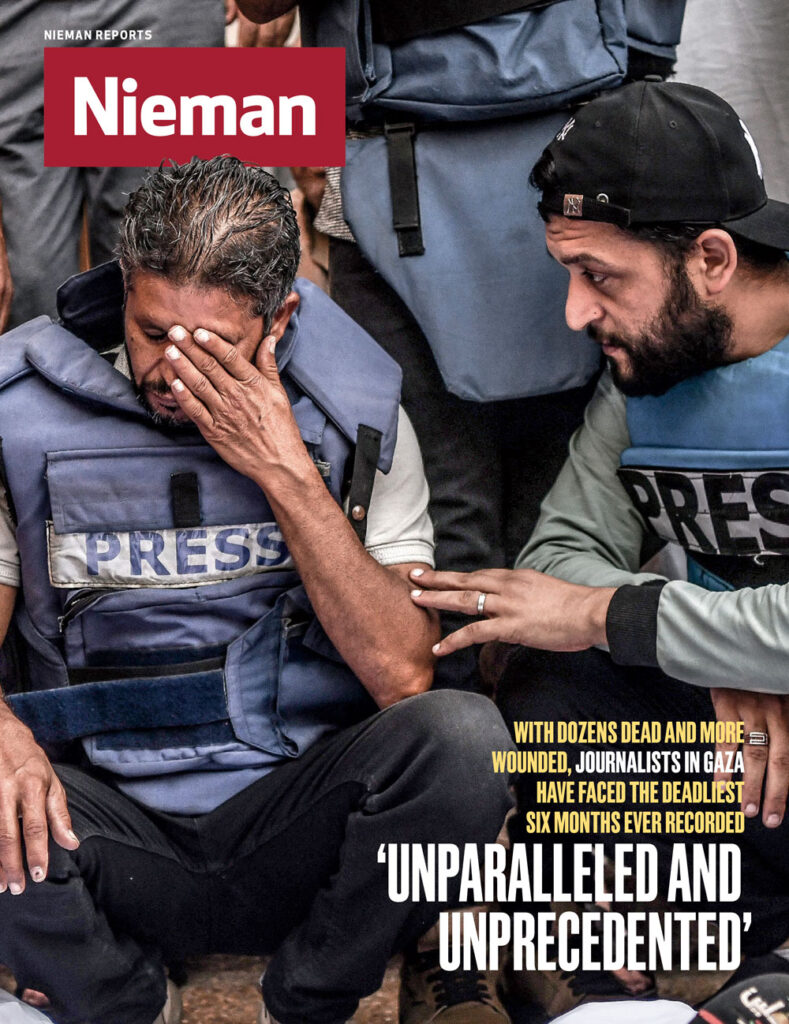Social media and the ways journalists use it are facing a legal reckoning in the courts.
This reckoning is easy to miss. We’re accustomed to a seemingly never-ending stream of news and commentary about internet regulation, powerful companies like Meta and Google, and lawmakers’ largely theatrical performances during congressional hearings featuring the CEOs of big tech firms. It’s all talk, no action.
But a constellation of five cases, at least four of which will be decided by the Supreme Court this term, are far more than idle noise. The cases will shape the flow of information — for journalists and audiences alike — for the foreseeable future.
Two of the cases, NetChoice v. Paxton and Moody v. NetChoice, consider laws from Texas and Florida that, in the name of protecting the marketplace of ideas, force social media firms to leave up posts and allow speakers access to their platforms that they would otherwise remove or block because they violate the services’ community guidelines.
Another pair of cases, O’Connor-Ratcliff v. Garnier and Lindke v. Freed, are about whether a public official violates the First Amendment when they block citizens, including journalists, from their social media accounts.
And in the fifth case, a federal judge blocked Montana’s TikTok ban from going to effect in November. That case, Alario v. Knudsen, will proceed, but last month’s ruling stopped the law from going into effect at the beginning of the year.
Together, these cases raise crucial questions about the government’s power to control the flow of information in social media spaces. The outcomes of these cases will influence journalists’ access to information and ability to hold powerful entities to account.
Gabe Rottman, director of the Technology and Press Freedom Project at the Reporters Committee for Freedom of the Press, says these cases pose risks to press freedom. They require courts to look at First Amendment press-rights cases anew, after generally settling that area of the law decades ago — sparking fears new decisions will undermine long-cherished rights.
Rottman reasons that if courts weaken First Amendment rights that keep government from influencing the flow of information through social media, it might not be long before the government starts filing lawsuits against news organizations using those same court decisions as precedent.
“Claims like that have the potential for government influence in the content of news coverage, which is an existential threat to a free press,” Rottman says.
Let’s start with the two cases before the Supreme Court that question whether government officials can block people from their social media accounts. In the O’Connor-Ratcliff case, two California school board candidates created Facebook and Twitter accounts to help publicize their candidacies. When they were elected, they used the accounts to post school-related information. When Christopher and Kimberly Garnier, parents of students in the district left critical comments on posts made by school board members, their comments were deleted and they were blocked.
Under slightly different conditions, James Freed created a personal Facebook page long before he was appointed city manager of Port Huron, Michigan. He used the page to post a mix of personal and official information. When a citizen, Kevin Lindke, criticized Freed about the city’s response to the pandemic, Freed blocked him.
In both cases, the citizens who were blocked sued the public officials, claiming removing them and their ideas from the spaces limits their First Amendment rights.
The cases revolve around whether public officials have the power to control access by journalists and other citizens to the social media spaces they create. The cases identify a tension between the privately controlled nature of most people’s social media accounts and the public forum–like aspects of accounts used by public officials to communicate about matters of public concern. In other words, is a public official’s social media account more akin to a private home or a city park?
There is little precedent to go on. The Supreme Court declined to hear a case involving Donald Trump, who blocked people from his Twitter account. He created the account when he was a private citizen, but it became one of his main tools for communicating when he was president. A federal appeals court ruled his Twitter account transformed into a public forum, like a public park, because he used it as part of his role as president, but the Supreme Court chose not to weigh in after Trump lost in 2020 and was banned from most of his social media accounts.
During oral arguments for both cases in late October, the Supreme Court seemed split over where the line between a private and a public social media space should be drawn for public officials.
Justice Elena Kagan emphasized the important role social media platforms have in public discourse. “More and more of our democracy operates on social media,” she said. “This is the forum for officials to talk to citizens, for citizens to talk to officials, for citizens to talk to each other, and it is becoming increasingly so.”
Justice Brett Kavanaugh seemed to favor protecting public officials’ rights to block people from their social-media spaces. “Elected officials and appointed officials rely on groups of people who are supporters, friends, people they’ve known, people that are fair-minded, not people that are just going to come and scream at them,” he said.
The Court will announce its decisions in the cases by the end of June. If justices deliver opinions that allow public officials to block individuals from their social media accounts, it could shift power to the government because the nation’s mayors, police chiefs, lawmakers, governors, and political candidates could select reporters and news organizations they favor and block others. That would also make it more difficult for reporters to get timely information from elected officeholders and other government bureaucrats — especially as they find it increasingly useful to speak directly to their followers rather than engage with the news media.
“When an official, using an account they usually use to disseminate their perspectives on government business blocks a reporter, blocks a journalist — blocks, quite frankly, a regular person — from those accounts, there’s a problem,” says Jasmine McNealy, an associate professor at the University of Florida and a fellow at the Berkman Klein Center for Internet & Society. “It’s not a private account anymore. They’ve changed the nature of it from a private space to one that is official, like the statements they would make if they were stating them in their official capacity.”
The questions posed by the NetChoice cases center around government control of social media spaces and ask the court to decide whether, in the name of the marketplace of ideas, the government can force a social media firm to leave up content and speakers that the service would otherwise remove.
“When an official, using an account they usually use to disseminate their perspectives on government business blocks a reporter, blocks a journalist — blocks, quite frankly, a regular person — from those accounts, there’s a problem.”
— Jasmine McNealy, associate professor at the University of Florida
The media law at the heart of Moody, Florida’s social media law passed in 2021 after Donald Trump was removed from platforms like Meta, Twitter, and Shopify after the Jan. 6 riot at the Capitol, provides Florida citizens and its attorney general mechanisms for filing lawsuits against and fining social media firms that block, ban, or algorithmically deprioritize content. (Trump’s Facebook and Twitter accounts were later reinstated.) The law also explicitly halts social media firms from moderating content from most news organizations. If it’s allowed to go into full effect, the measure would generally limit social media firms’ power to moderate content published in their spaces.
Texas’ 2021 social media law, as outlined in Lindke, stops large social media sites like Facebook and YouTube from limiting expression based on a user’s viewpoints or geographic location within the state. Like the measure in Florida, the law would compel private actors and corporations to allow for the communication of ideas they would otherwise not share.
The Eleventh Circuit Court of Appeals struck down Florida’s social media law in spring 2022, but the Fifth Circuit Court of Appeals, in a feat of law-interpreting gymnastics, upheld Texas’s law as constitutional in September. The court concluded social media firms do not have First Amendment rights that are similar to individual citizens. “[T]he State can regulate conduct in a way that requires private entities to host, transmit, or otherwise facilitate speech,” the decision reads. “Were it otherwise, no government could impose nondiscrimination requirements on, say, telephone companies or shipping services.”
The conclusion ignores multiple Supreme Court decisions that say otherwise. Justices affirmed that corporations receive First Amendment safeguards in the Citizens United v. Federal Elections Commission decision in 2010, noting that “the First Amendment does not permit Congress to make these categorical distinctions based on the corporate identity of the speaker and the content of the political speech.”
Crucially, most news organizations are categorized as corporate speakers. A decision that concludes the government can compel social media firms to publish or leave up content and speakers could open the door for similar efforts to force news organizations to publish certain content and ideas — all under the guise of creating a fair marketplace of ideas.
Other precedents are squarely against the laws’ constitutionality as well. Almost 50 years ago in Miami Herald v. Tornillo, unanimous Supreme Court resolved that the government can’t compel a news organization to publish. Decades earlier, the Supreme Court ruled the West Virginia Board of Education couldn’t force students to recite the Pledge of Allegiance.
These precedents, however, might not stop the court from upholding the new laws. Justice Samuel Alito, writing to disagree with his peers’ decision to prohibit the Texas law from going into effect in 2022, noted the law raises questions of “great importance” about big technology firms and “the power of dominant social media corporations to shape public discussion of the important issues of the day.” Justices Neil Gorsuch and Clarence Thomas joined him in his argument.
These laws would make already toxic and often falsehood-filled social media environments even worse because they restrict moderation efforts. Even more concerning, however, are the precedents the Supreme Court will be setting if it upholds the laws. There is not a great distance between giving the government the power to force social media companies to host information they otherwise would not host and giving the government power to force news organizations to publish information it would otherwise not publish, according to Rottman.
Montana’s TikTok ban asks a similar question about government control, but here, rather than forcing a platform to publish, the state wants to block an entire channel of communication. Journalists, along with other citizens, would not be able to post or view content via one of the most popular social media platforms.
Citing national security concerns, Gov. Greg Gianforte signed a bill in May that prohibits the social media platform from being used in Montana and makes it illegal for app stores to make it available for download. TikTok’s parent company, ByteDance, filed suit, arguing the law was an unconstitutional restriction on free expression.

The Montana ban is based on the idea that TikTok is a national security threat because of the way it extracts data from its users. Lawmakers have expressed concern that ByteDance, which was founded by Chinese entrepreneurs, could share data with the Chinese government — an accusation company officials have flatly denied. A federal judge halted Montana’s law from going into effect, reasoning it “unconstitutionally targets speech and that the law is subject to the highest level of constitutional scrutiny.” Montana’s attorney general filed notice in January that the state will appeal the decision.
McNealy questioned the state’s reason for focusing on TikTok, noting many technology firms gather extensive information about users.
“The rationale they give for it doesn’t pass muster at all,” McNealy said. “It’s rooted in xenophobia. Can we just be honest with the issue with TikTok right there? Facebook has been collecting all kinds of information forever.”
The Montana case is one of the first to test whether the government can censor an entire social media platform, but the government has sought to ban or block newspaper content in the past. Supreme Court decisions have rejected government efforts to do so. In 1931, the first decision in which justices overturned a law because it conflicted with the First Amendment, the court ruled that Minnesota had gone too far when government officials shut down the Minneapolis Saturday Press under a public nuisance law that allowed the state to close any “malicious, scandalous and defamatory newspaper, magazine or other periodical.” The paper had attacked the mayor of Minneapolis, the city’s police chief, and the county attorney, publishing generally untrue information about them. (It had also published antisemitic comments.) In a 5-4 decision, however, the justices held that the government couldn’t preemptively stop a publication from publishing. In the 1971 Pentagon Papers decision, the Supreme Court rejected the government’s national-security rationales for halting The New York Times and The Washington Post from publishing stories that stemmed from a classified report on the military’s history in Vietnam, reinforcing this principle.
Montana is the only state to ban TikTok entirely, but more than 30 states and the Biden administration have banned TikTok from government-maintained devices and networks. In September, 18 state attorneys general filed a brief asking the federal court considering Montana’s ban to let the law go into effect. If the ban somehow survives First Amendment challenges in Montana, it could spread to other states and potentially other platforms, limiting the channels journalists can use to report information and distribute it to audiences.
These cases don’t carry the spectacle and fanfare that often characterize congressional hearings, or the concern and lobbying efforts news organizations generally muster to support or fend off bills that would affect journalism. But they have emerged as a potentially transformative set of decisions regarding how journalists reach audiences and access crucial sources of information. And, that could create, in turn, a profound shift in governmental influence over editorial decisions.




